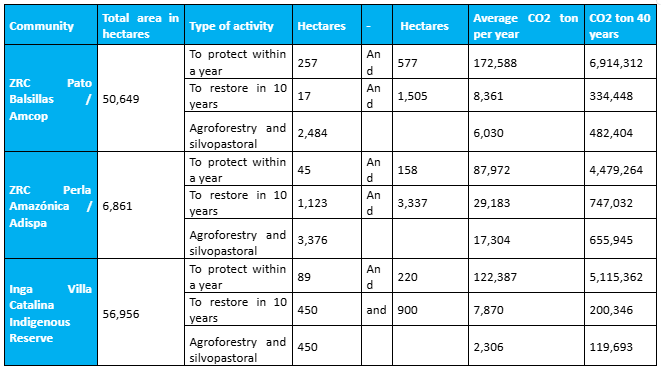![]() Its objectives were to: establish commitments and action frameworks to conserve biological diversity; ensure the fair and equitable sharing of benefits arising from the use of genetic resources; and promote the care and value of natural riches.[1].
Its objectives were to: establish commitments and action frameworks to conserve biological diversity; ensure the fair and equitable sharing of benefits arising from the use of genetic resources; and promote the care and value of natural riches.[1].
The UN Multi-Partner Trust Fund for Peace is committed to environmental sustainability and avoiding harm to ecosystems in all its interventions.
It was also present at COP16, where the series Agua, produced in 2024, was exhibited to showcase the transformations of communities and territories in Antioquia, Catatumbo, and Guaviare. The series covered topics such as the search for disappeared persons, production projects by peace signatories, ecotourism routes, and the protection of the Jaguar Corridor. The exhibition took place in the UN Colombia Pavilion, which was established as an inter-agency strategy to foster dialogue and serve as a platform to showcase the work of various agencies, funds and programmes on environmental issues.
[1] More information at www.cop16colombia.com
Initiative supported by:

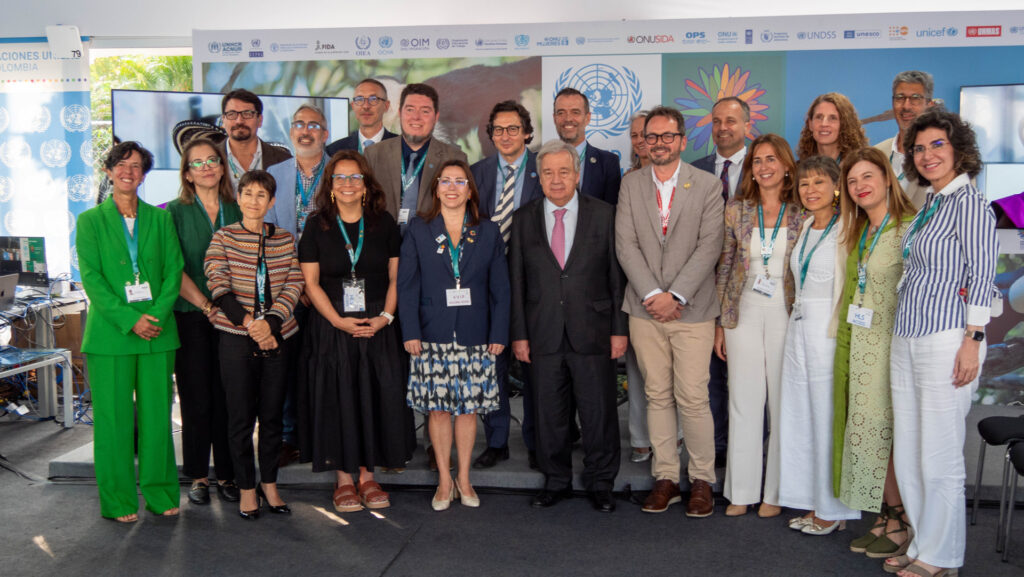
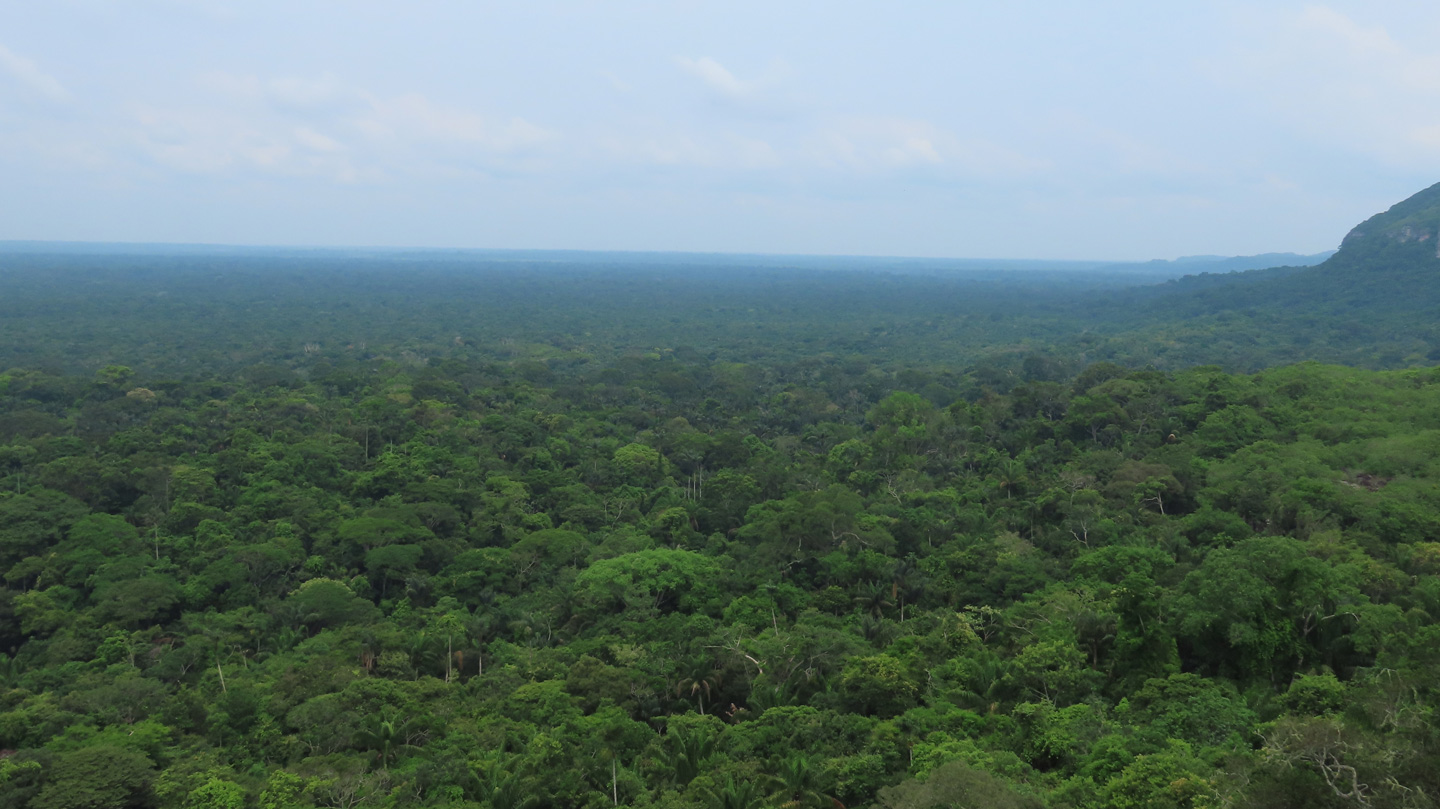
Peace and the environment
a meeting point in the PDET municipalities
The environmental aspect is a vital component for the territorial transformation of PDET municipalities. This is especially true in those places where the ecological structure makes up a fundamental part of the municipalities, which is why many of these places continue to be a target for the conflict promoted by groups operating outside the law.
[2].
[2] El Fondo impulsa la estrategia Naturaleza para la paz que tiene incidencia en los municipios de Puerto Guzmán, Puerto Asís, San Vicente de Caguán, San José del Guaviare, Barbacoas y Ricaurte; componente dos: Algeciras, Chaparral, Planadas, Mesetas.
Since 2022, the Fund has recognised the environmental importance and potential of the departments of Caquetá, Guaviare, Huila, Meta, Nariño, Putumayo, and Tolima, thanks to their biodiversity and the capacity of the communities living there to develop green businesses. This aims to establish them as key actors who support restoration efforts and become guardians for the protection of areas considered the lungs of Colombia—and the world.
Together with their communities, UNDP and UNEP, the Fund contributes to peacebuilding and the prevention of socio-environmental conflicts in these departments by promoting green investments in some of their PDET municipalities. This is made possible through strengthening the capacities of grassroots organisations and farmers present in these areas, which boast high levels of biological and cultural diversity.
Particularly in 2024, with the support of the American NGO Wildlife Conservation Society (WCS), three prefeasibility analyses were completed in the departments of Putumayo (2) and Caquetá (1) to identify the potential for certification of CO₂ tons in the voluntary carbon market through REDD+[3],
projects, which represent one of the main green investments in the Amazon. The three analyses produced the following results:
[3] REDD+: se refiere al proceso moderado por la Convención Marco de las Naciones Unidas sobre el Cambio Climático que apoya los esfuerzos de los países para reducir las emisiones derivadas de la deforestación y la degradación forestal, y fomentar la conservación, la gestión sostenible de los bosques y el aumento de las reservas forestales de carbono.
In conclusion, for a total of 114,466 hectares analysed across the three regions/communities, the following was identified: (i) between 391 and 956 hectares to protect, with a potential CO₂ capture of 16,508,938 tons over 40 years; (ii) between 1,590 and 5,742 hectares to restore, with a potential to avoid CO₂ emissions of 1,281,826 tons over 10 years; and (iii) 6,310 hectares for the development of agroforestry and silvopastoral systems, with a potential CO₂ capture of 1,258,042 tons over 40 years.
The development of these three REDD+ projects presents a significant potential to mitigate climate change by preventing the emission of more than 17 million tons of CO₂ over 40 years through conservation, restoration, and the development of sustainable production systems. The Pato Balsillas Rural Reserve Zone (San Vicente del Caguán) stands out as the area with the greatest impact, with 7.4 million tons of emissions avoided and a potential of 3.2 million carbon credits. Additionally, the participation of rural and indigenous communities strengthens governance and sustainable management in this territory.
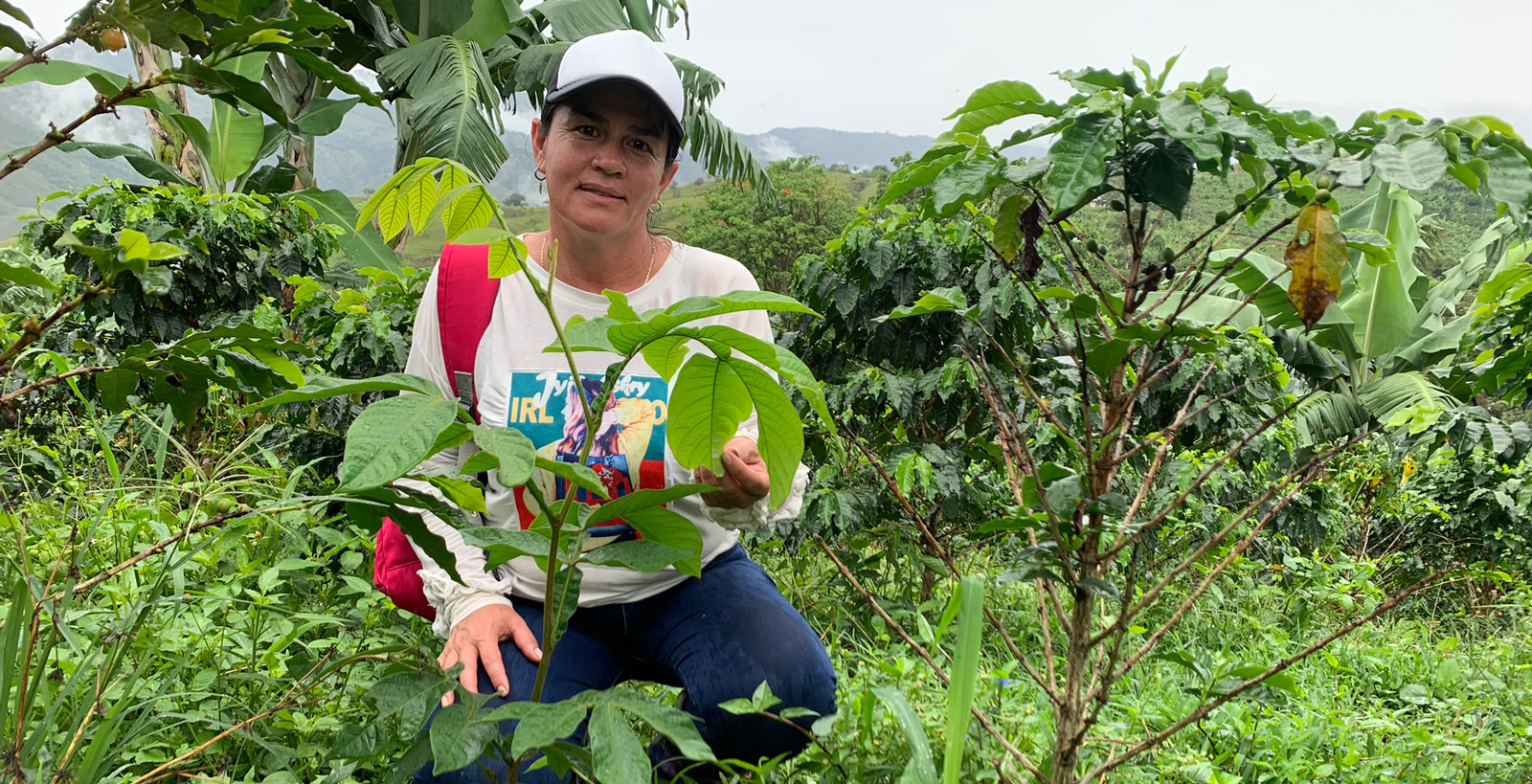
Despite the potential for greenhouse gas (GHG) emission reduction and capture offered by these two Rural Reserve Zones (ZRC, for their Spanish acronym) in the departments of Caquetá and Putumayo, as well as the Inga Indigenous Reserve of Villa Catalina in Putumayo, these projects face multiple structural, legal, economic, and social barriers that compromise their viability and effectiveness in mitigating climate change. As a result, they are not yet ready for commercialisation in the market, considering the following factors:
The lack of legal security regarding land tenure, particularly in the Rural Reserve Zones (ZRC) and in the Villa Catalina Indigenous Reserve. The absence of property titles and the presence of external occupants prevent compliance with international standards and hinder the implementation of conservation and restoration activities. Without clear rights to use and manage the territory, it is impossible to ensure the long-term continuity of environmental benefits.
The high risk of non-continuity and emissions leakage, which significantly reduces the amount of carbon credits that can be utilised. In the Perla Amazónica ZRC, the annual deforestation rate of -2.73%, combined with the promotion of agricultural projects, threatens the stability of conservation efforts. In the Villa Catalina Reserve, the lack of territorial control and occupation by rural settlers and armed groups worsens the problem. It is estimated that if settlers were displaced, their migration to other areas would create new pressures on forests, increasing emissions leakage. For this reserve, the risk of leakage is calculated at 54%, meaning that more than half of the protected carbon could be lost due to the displacement of emission-causing activities.
Financial difficulties represent another key limitation. Implementing these projects requires considerable investments in restoration, monitoring, community strengthening, and international certifications. However, financial analyses show that most economic scenarios are not profitable. In some cases, even after 40 years of implementation, revenues would not cover operational costs.
In conclusion, the lack of security in land tenure, the high risks of deforestation and leakage, the lack of economic viability in most scenarios, and weaknesses in local management make these projects high-risk options with low levels of feasibility under current conditions. To ensure their success, it is essential to advance in property formalisation, strengthen community governance, and develop strategies that make long-term conservation financially viable.
Unfortunately, for years REDD+ projects have been driven by speculative financial logic that has resulted in poor technical and social practices, human rights violations, and failure to meet conservation objectives. For this reason, these prefeasibility analyses have provided key information to social organisations about the sustainable management of their resources and have demonstrated that:
There is a need to generate an effective public policy that is aligned with the contexts of each territory in order to make it viable for the communities to participate in the carbon market and allow them to make informed decisions about their participation in these markets, as well as mitigating any negative impacts.
Although REDD+ projects may result in the confirmation of their non-viability, communities play an active role in forest conservation; additionally, there may be other, more suitable environmental compensation strategies.
The transition from an approach centred on carbon to comprehensive portfolios of services and environmental products was promoted, including community governance and technical assistance.
Also in 2024, in Huila, Tolima, and Meta, support continued for the removal of greenhouse gases through restoration actions with coffee growers associated with FEMNCAFE [4].
Using landscape management tools, the sustainability of coffee production practices has been improved, resilience increased, and vulnerability to climate change reduced, while at the same time lowering crop management costs and enhancing coffee quality.
In the department of Nariño, in the municipalities of Ricaurte and Barbacoas, and within what has been established as the Coastal Andean Foothills Corridor, work is being carried out alongside 10 grassroots community organisations: five composed of farmers, one of female victims of the conflict, three from indigenous groups, and one that is part of a community council. These organisations are developing initiatives for the conservation and sustainable use of forests, which include livelihood projects and environmental protection based on ecological and economic connectivity.
[4] La Federación Mesa Nacional del Café – FEMNCAFE se encuentra conformada por 32 formas organizativas territoriales que, en su gran mayoría, son lideradas por firmantes de paz, distribuidas en 8 departamentos de Colombia: Antioquia, Cauca, Cundinamarca, Guaviare, Huila, Meta, Tolima y Valle del Cauca (sede en Yotoco), que reúne a más de 1.062 productores de café. Adicionalmente desde el 2022, esta federación se encuentra vinculada al proyecto Naturaleza para la Paz que, desde su componente dos, busca implementar sistemas productivos cafeteros sostenibles y resilientes, que contribuyan a la captura de GEI.
In the department of Guaviare, another region of the country where, due to its vast Amazonian forests, its inhabitants have experienced forced displacement, disappearances, massacres, trafficking, illicit crops, and other impacts that accelerate environmental deterioration, the Jaguar Corridor was established to counteract these effects. This corridor connects the Sierra de la Macarena, on the border with the department of Meta, with Guaviare, covering a management area from the Serranía de la Lindosa Forest Reserve Zone to Charras Boquerón, including wetlands and forests along the Guaviare River. Efforts are focused on the preservation of the jaguar, a species that is endangered.
With resources from the Fund in 2024, support and strengthening were provided to 19 community tourism and rural promotion ventures; the collaborative network—Jaguar Protection Corridor—was consolidated, comprising 21 grassroots community organisations operating in two sectors of the department (La Lindosa and Nare, Fugas, Charras, and Cámbulos). In addition to reinforcing the governance of this network under the leadership of five promoters, 24 farms were assisted following incidents involving this feline, and 39 technical assistance visits were conducted.
To conclude, this project, through actions integrating environmental conservation, education in sustainability, and the promotion of community values, has generated a profound and sustainable impact for these departments. The promotion and development of these initiatives have not only improved the quality of life in the present but have also sown the seeds for a future where respect for the environment and peaceful coexistence become fundamental pillars of the community processes they lead there.
The main transformations in these departments include:
- The prevention of environmental conflicts, with the integration of environmental conservation with local economic development, strengthening community governance and participation. This has reduced disputes over access to land and resources, preventing socio-environmental conflicts.
-
The strengthening of governance and social inclusion, empowering women and
 indigenous, Afro-Colombian and rural communities as leaders in conservation and decision-making, fostering social cohesion and gender equality. This helps to strengthen livelihoods with a more equitable distribution of benefits and greater influence on land-use planning and environmental protection, which helps prevent environmental degradation.
indigenous, Afro-Colombian and rural communities as leaders in conservation and decision-making, fostering social cohesion and gender equality. This helps to strengthen livelihoods with a more equitable distribution of benefits and greater influence on land-use planning and environmental protection, which helps prevent environmental degradation.
- The adapting of different community financial mechanisms to local realities, which allows for scaling and sustained environmental practices.
- The rural outreach initiative and its implementation on demonstration farms made community monitoring, productive reconversion, ecosystem restoration, and connectivity key elements for the transformation of these territories — establishing it as a strategy for governance and environmental sustainability.
- The key role that forests play in climate regulation is clear to see, while the work of local communities is highlighted for their leadership in forest protection and in strengthening their sustainable livelihoods.
eeping the forest standing and consolidating sustainable livelihoods is a concrete expression of peace with nature, recognising that ecosystem stability is intrinsically linked to the well-being of communities. This approach has also contributed to building peace among people by creating legitimate economic opportunities, reducing land-use conflicts, and strengthening the social fabric in affected territories.
- Training plan within the community strengthening pathway for REDD+ with a differential approach – 3 modules.
- 3 REDD+ participatory prefeasability studies created by WCS. elaborados por WCS.
- A portfolio of 37 sustainable commercial chains was consolidated al habilitar condiciones para el desarrollo de:
- 8 short circuits in the Perla Amazónica ZRC, the Inga Villa Cataline Indigenous Reserve in Putumayo and the Rio Pato y Valle Balsillas ZRC in Caquetá.
- 19 markets widened in the Jaguar Corridor (Guaviare).
- 10 initiatives for the use and conservation of agricultural biodiversity in the Piedemonte Andino Costero Corridor (Nariño).
OTHER FUND ACTIONS IN 2024 AND ENVIRONMENTAL SUSTAINABILITY
Some examples of good practices adopted by Fund initiatives in 2024 include:
PRODUCTION PROJECTS
Sustainable agriculture:
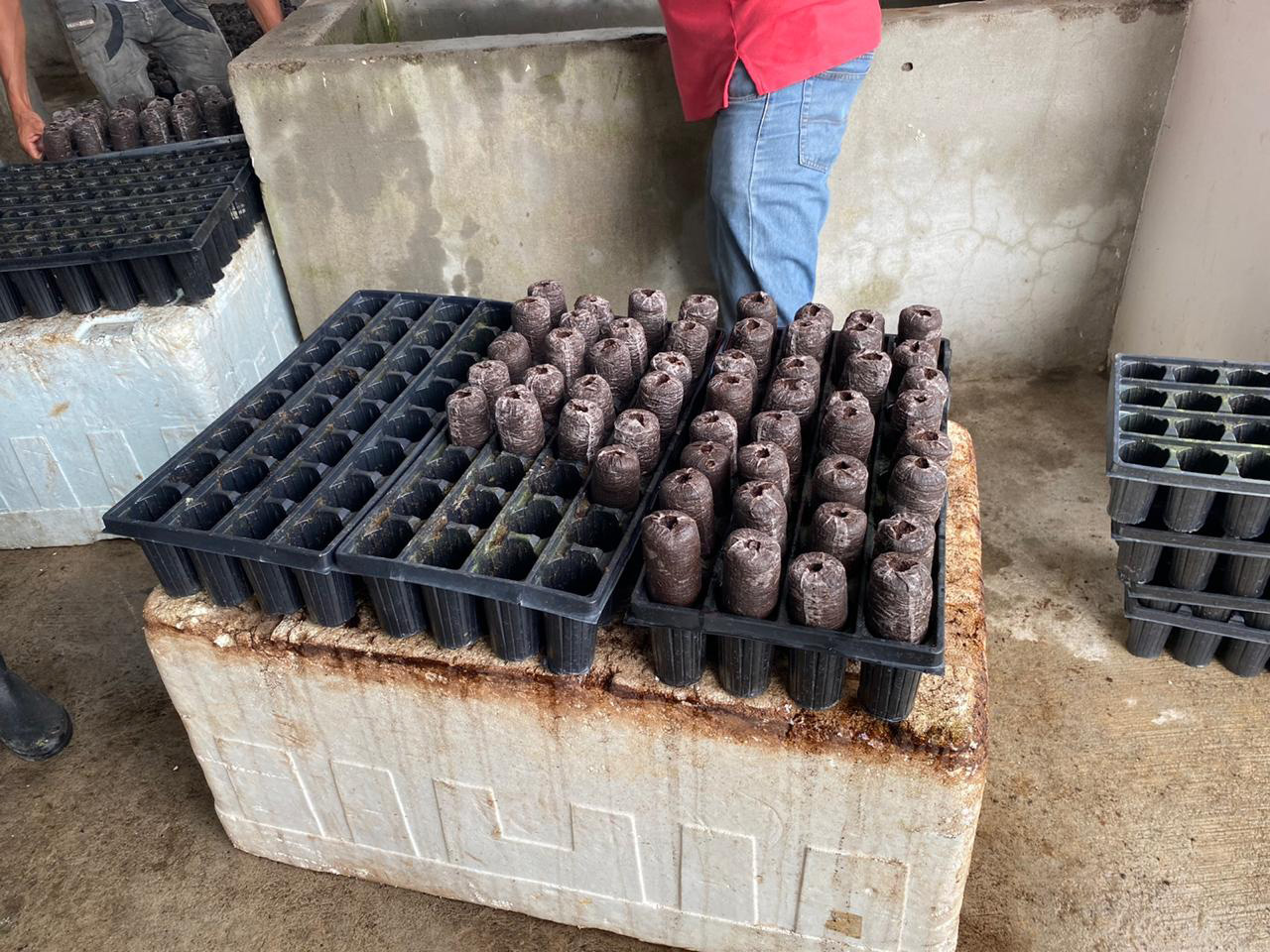
Corpocampo uses organic fertiliser produced from coconut shells for the production of acai.
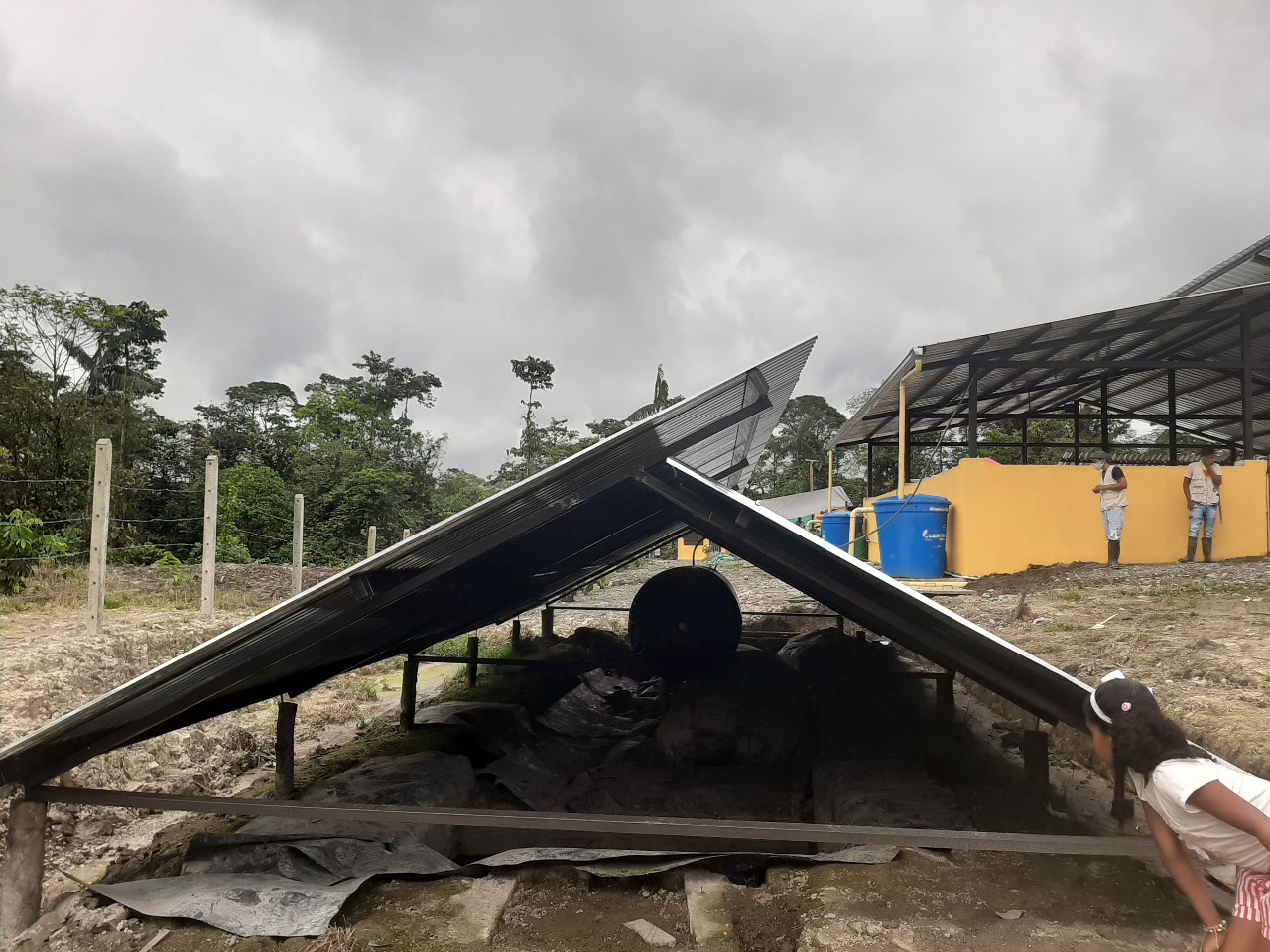
In the integrated pig farm of the Awá Women's Association, Asogripmaiz, support was provided for the installation of a biodigester to produce agricultural fertilisers using waste from the farm located in El Diviso, Tumaco, Nariño.
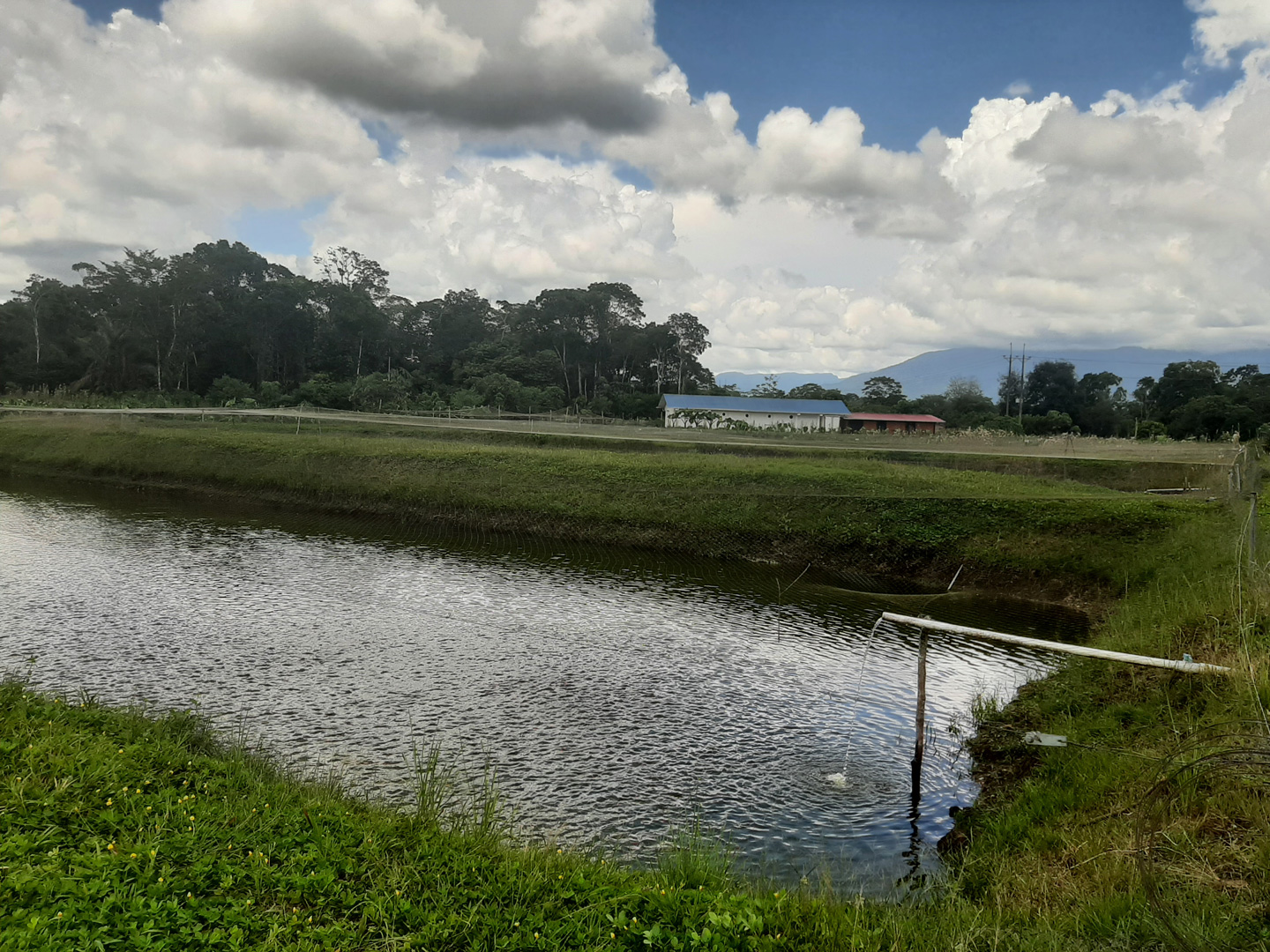
The Multiactive Community Cooperative, COMUCCON, in Puerto Guzmán, Putumayo, installed two fish farming ponds using biodegradable materials.
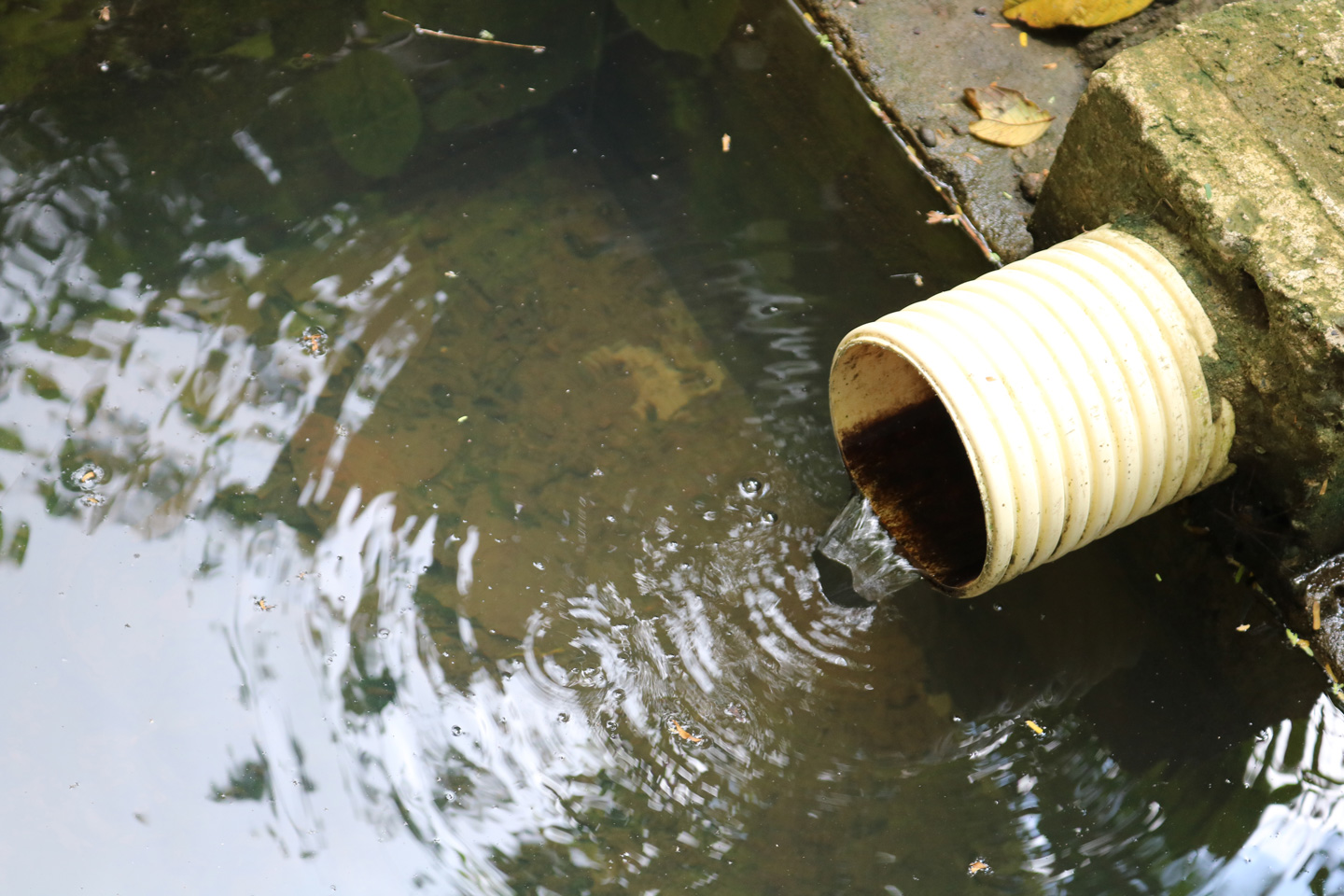
In Caldono, Cauca, peace signatories and communities developed a strategy to manage wastewater from the agricultural project.
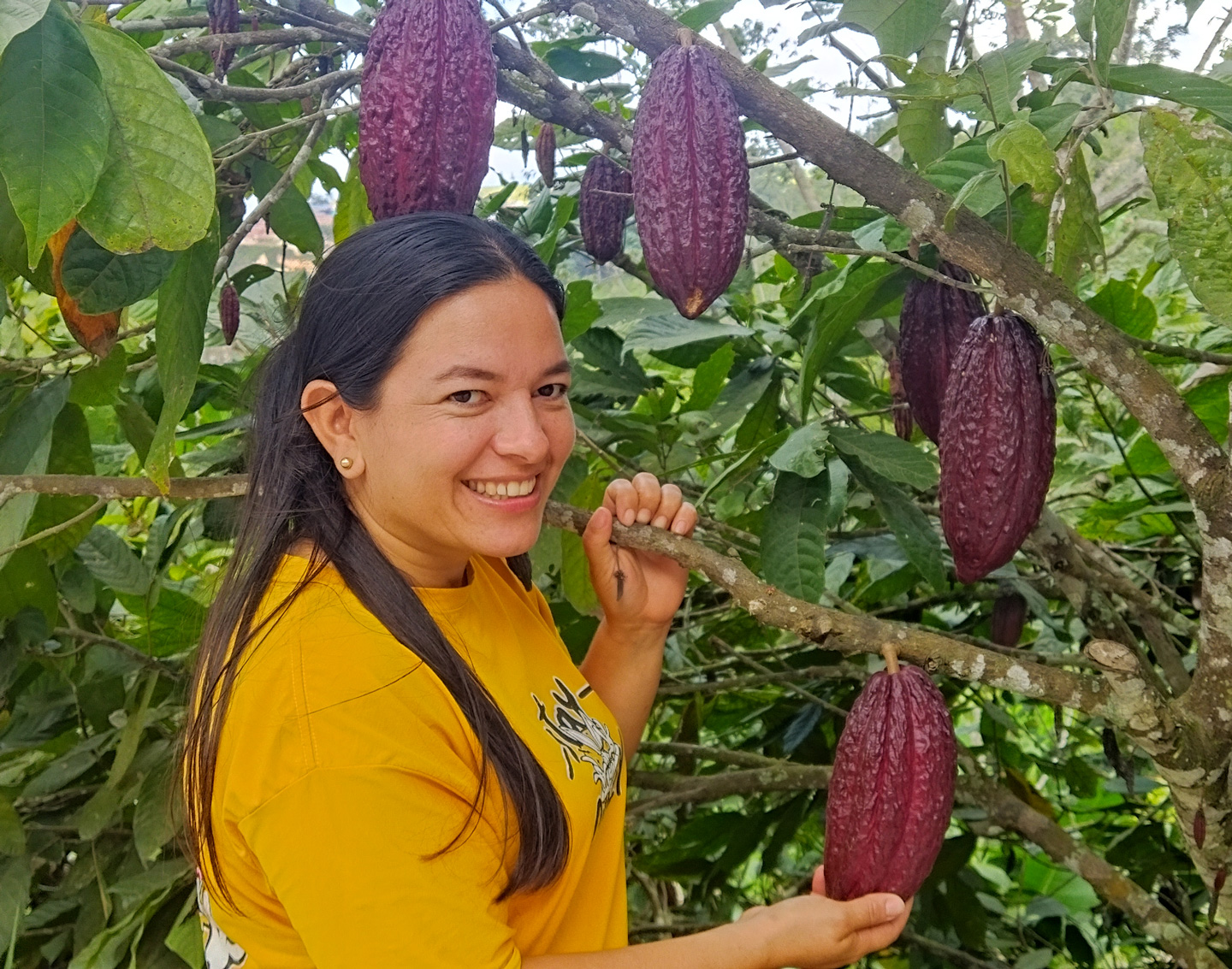
In the Catatumbo region, cocoa producers received technical assistance to improve seedlings by grafting more productive varieties onto older crops.
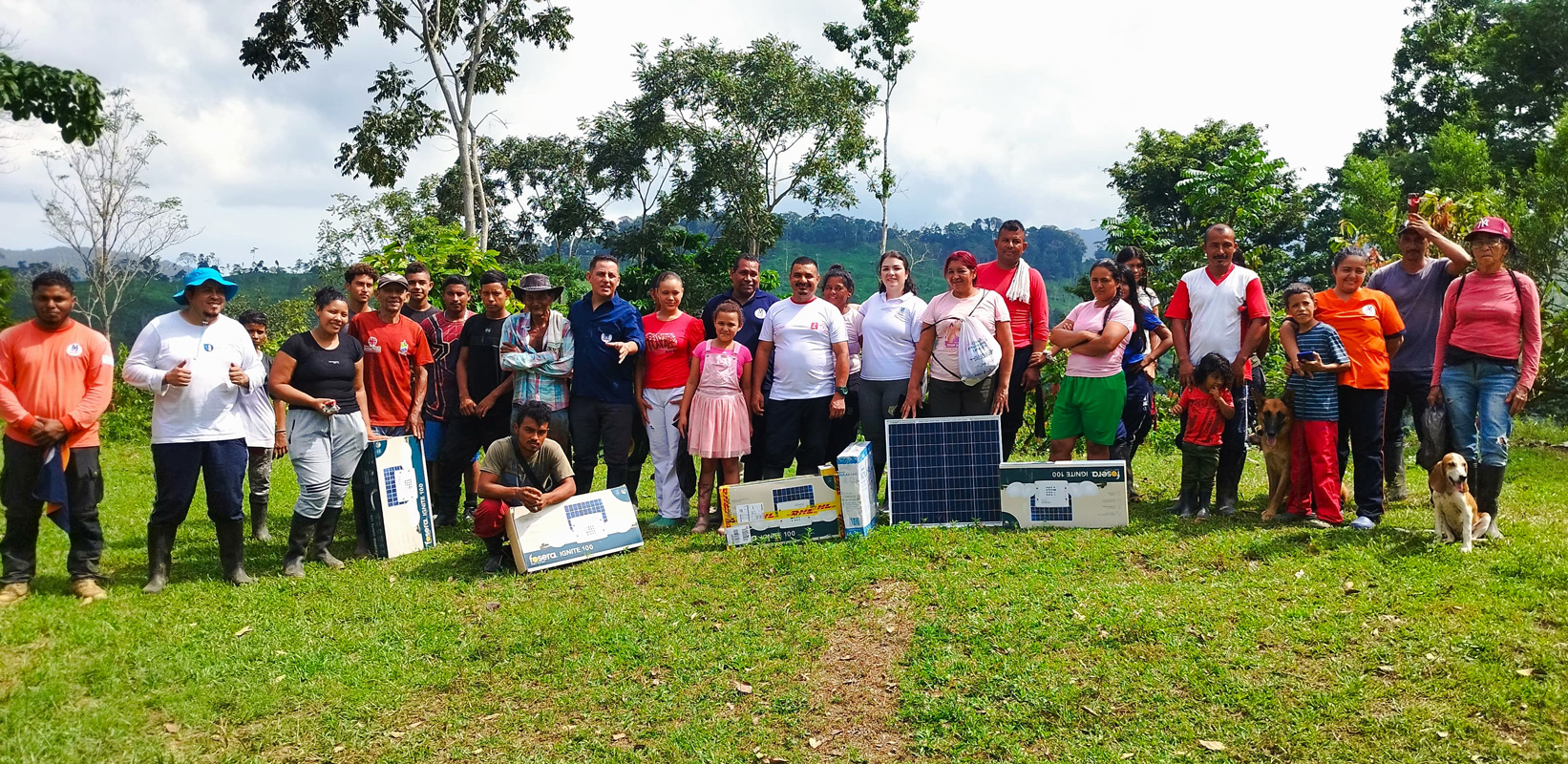
As part of the community initiatives developed by Humanicemos DH in areas handed over to communities as free of antipersonnel mines, solar panels were delivered to support the sustainable generation of electricity in community assets in Apartadó, Antioquia.
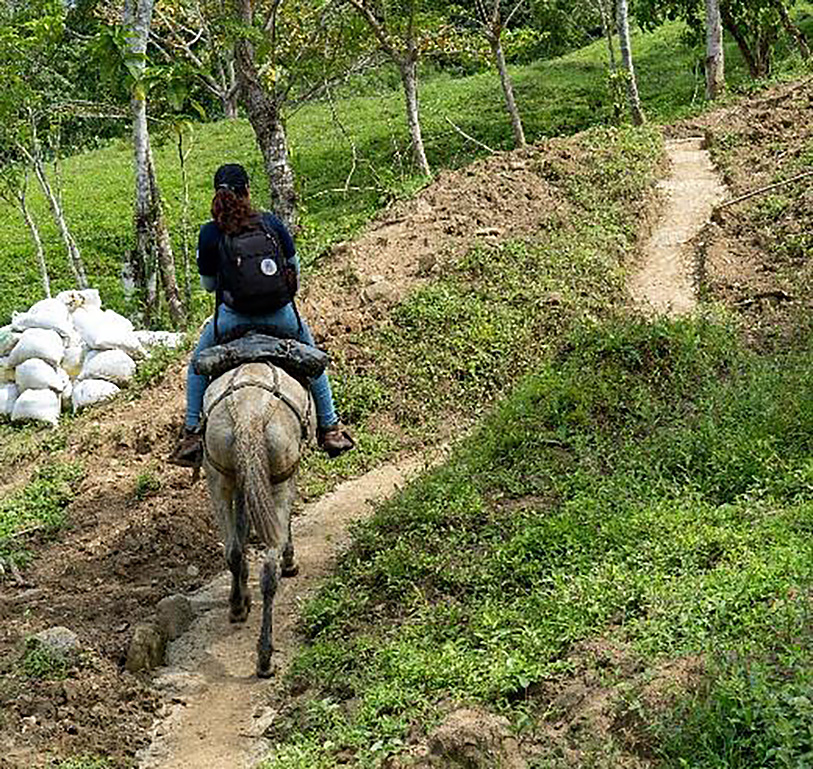
Humanicemos DH also recovered tertiary roads using sustainable materials, improving access, communication, and transit for the residents of the Buenos Aires rural area in Apartadó, Antioquia.
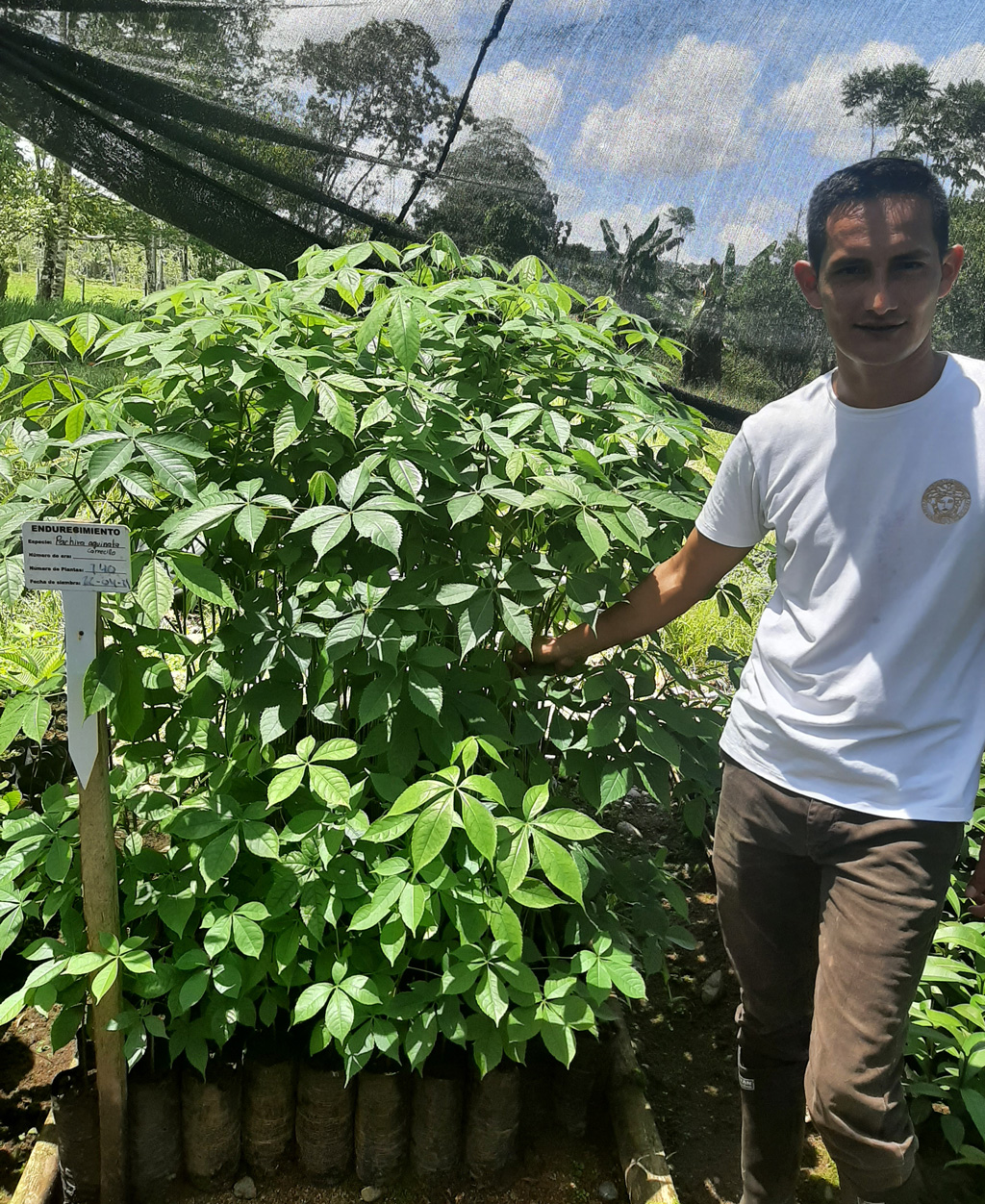
One of the productive lines of the Multiactive Community Cooperative, COMUCCON, is the reproduction of endemic species from Putumayo, mainly timber trees that are recovered from the natural reserve. The aim is to promote the replanting of these species within local communities.
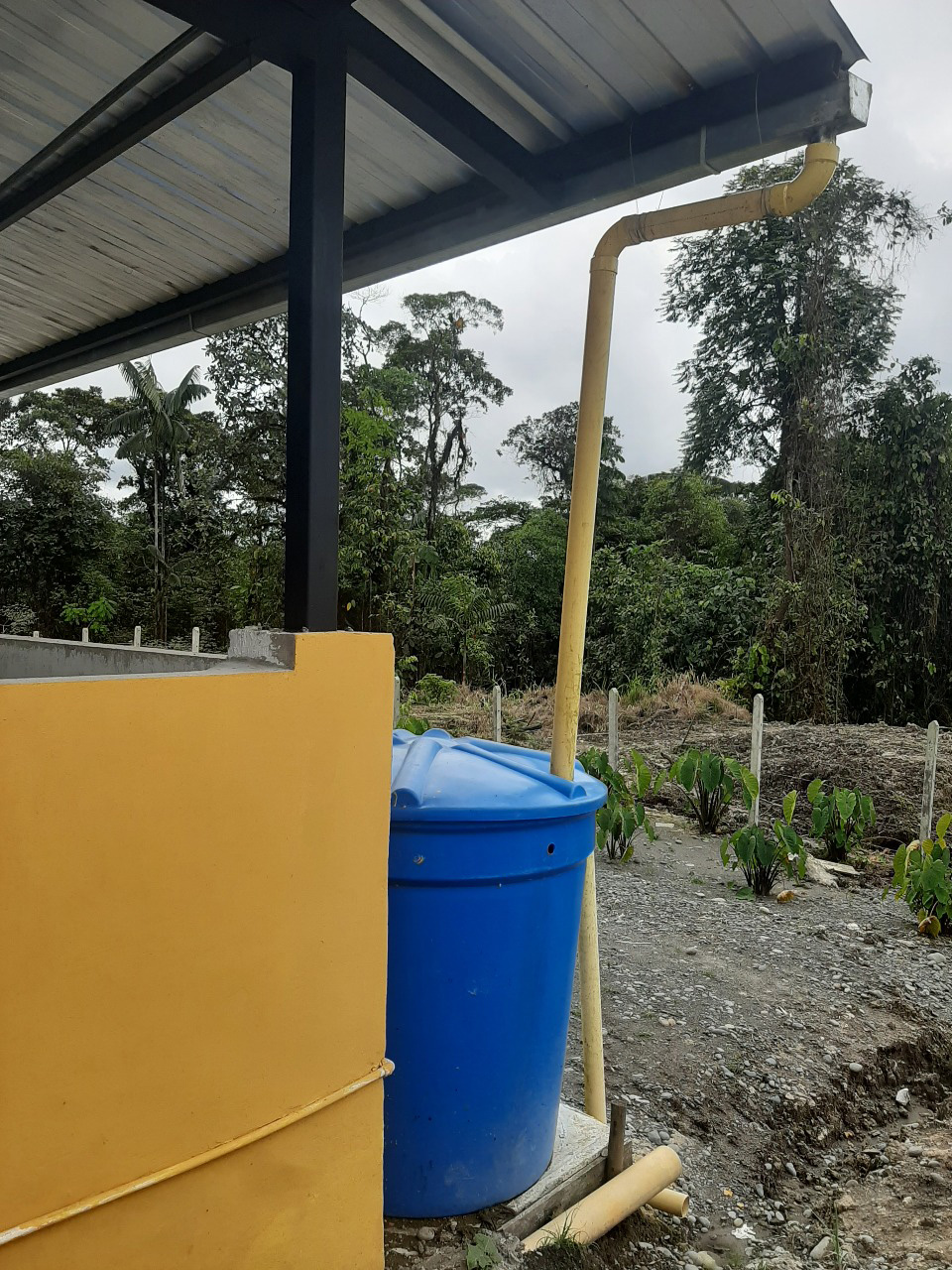
Rainwater is collected at the integrated pig farm located in El Diviso, Tumaco, for cleaning the farm itself and producing organic fertilisers.
Sustainable rural housing
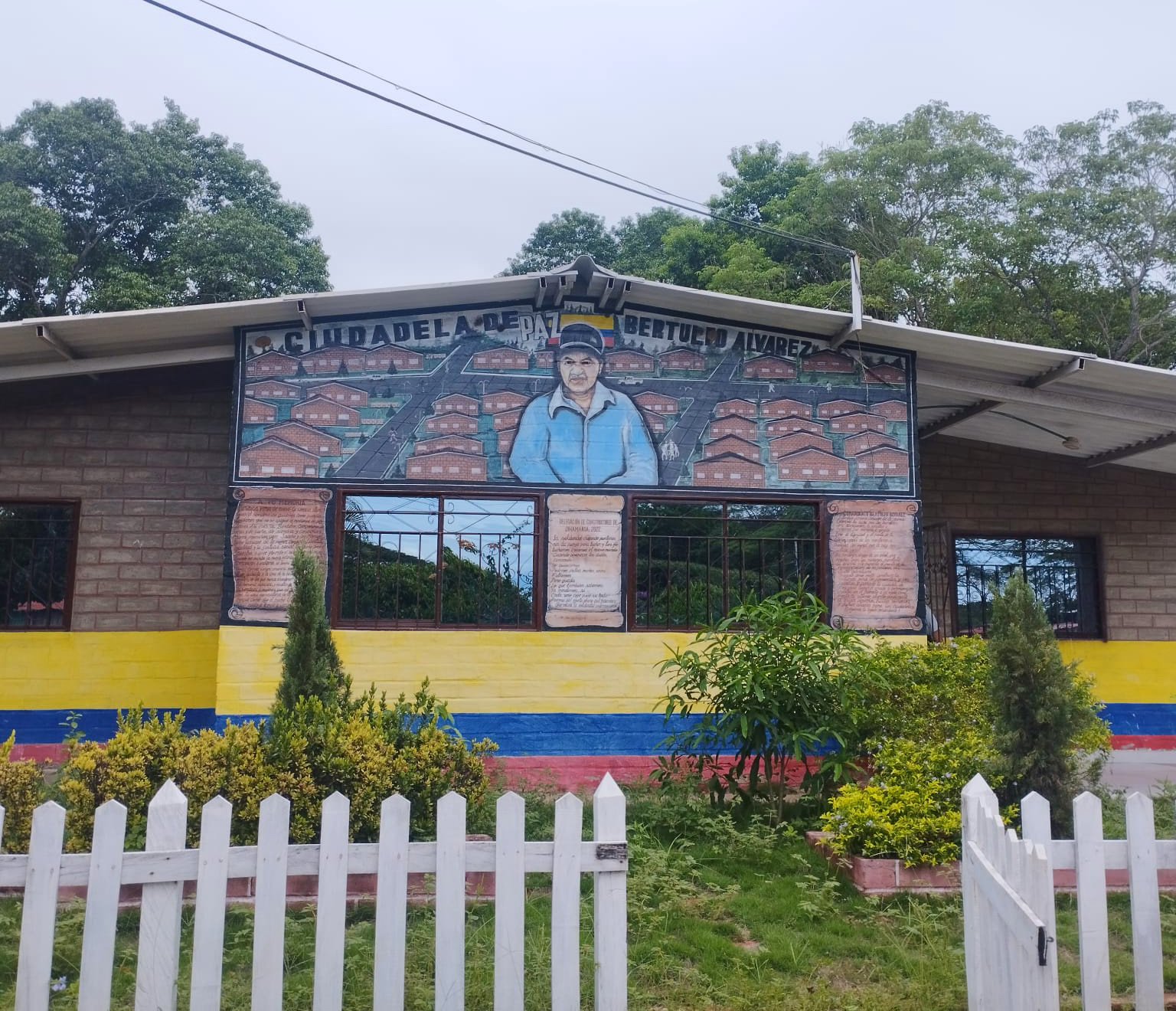
The peace signatories from the Former Territorial Area for Training and Reintegration (TATR) of Pondores, located in Fonseca, La Guajira, received technical assistance to develop compressed earth blocks (CEB) as a contribution to self-managed housing.
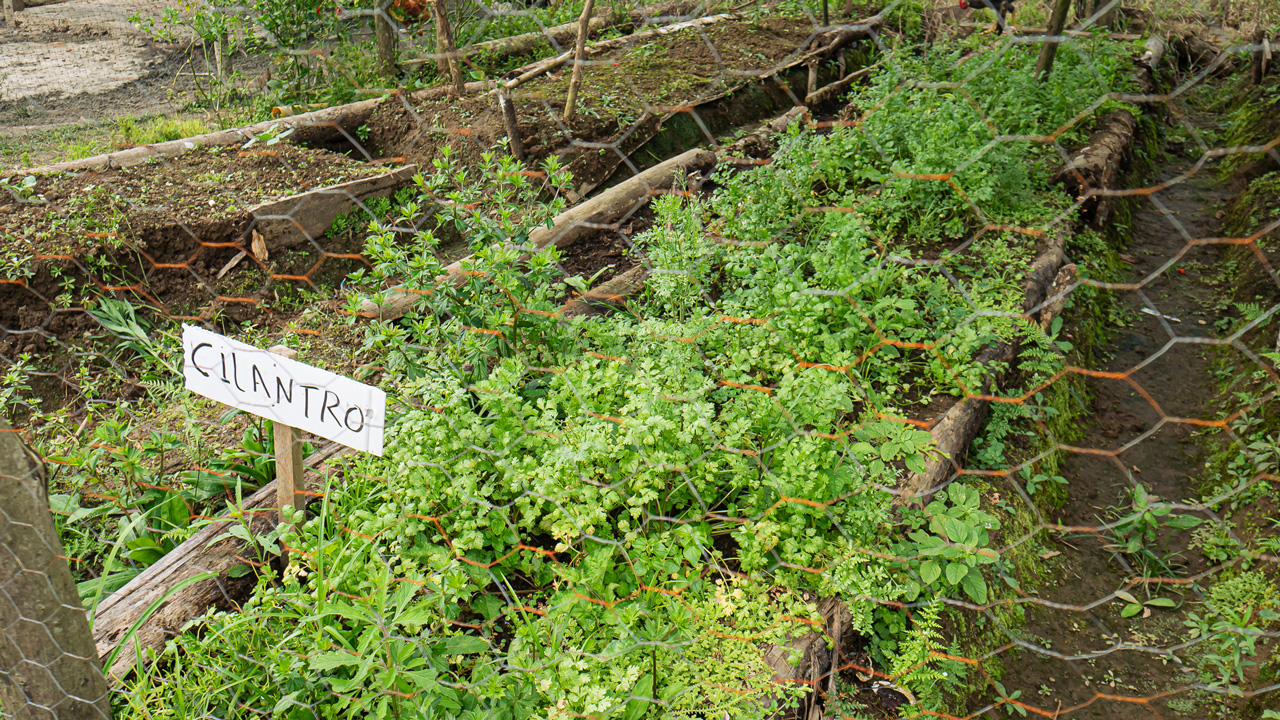
In Chocó, the communities living in Belén de Bajirá set up domestic allotments to provide for their families as part of the initiative aimed at strengthening food security.
Climate change mitigation
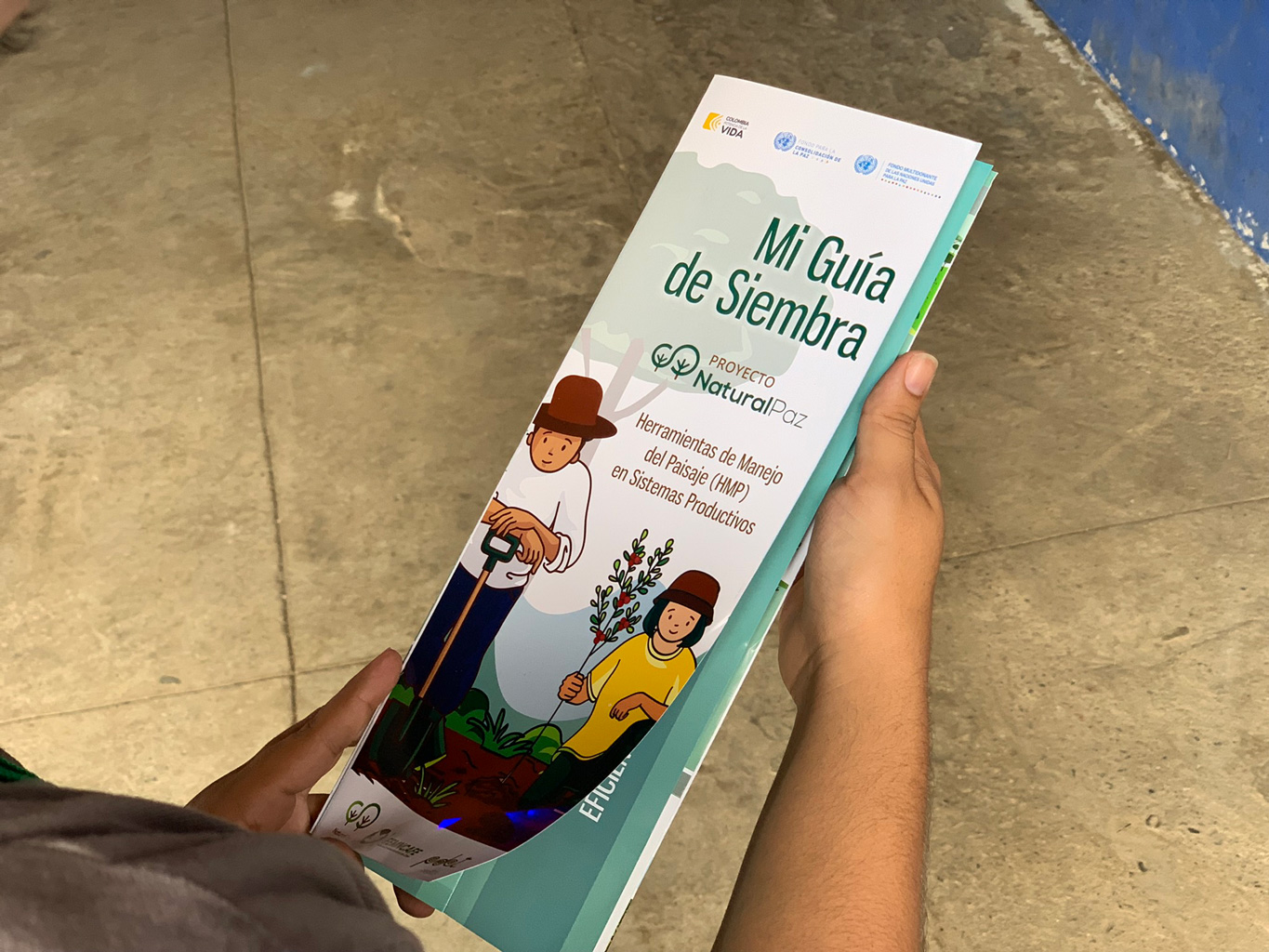
Keeping the forest alive in the areas of influence of the Nature for Peace project – a total of 275,746 hectares. This prevented the emission of 8,771,231 tonnes of CO₂ in a single year.
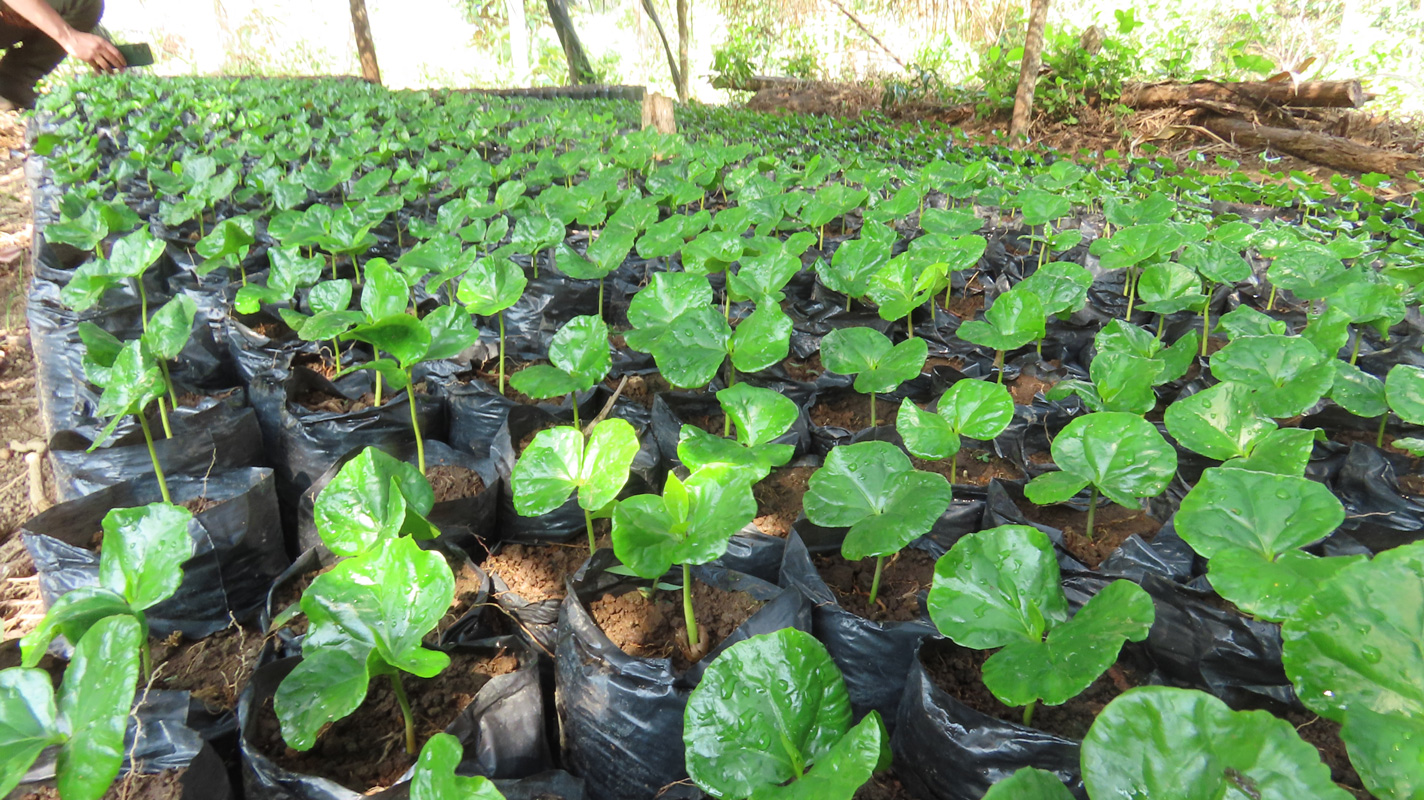
Three demonstration farms with climate change adaptation measures for coffee producers.
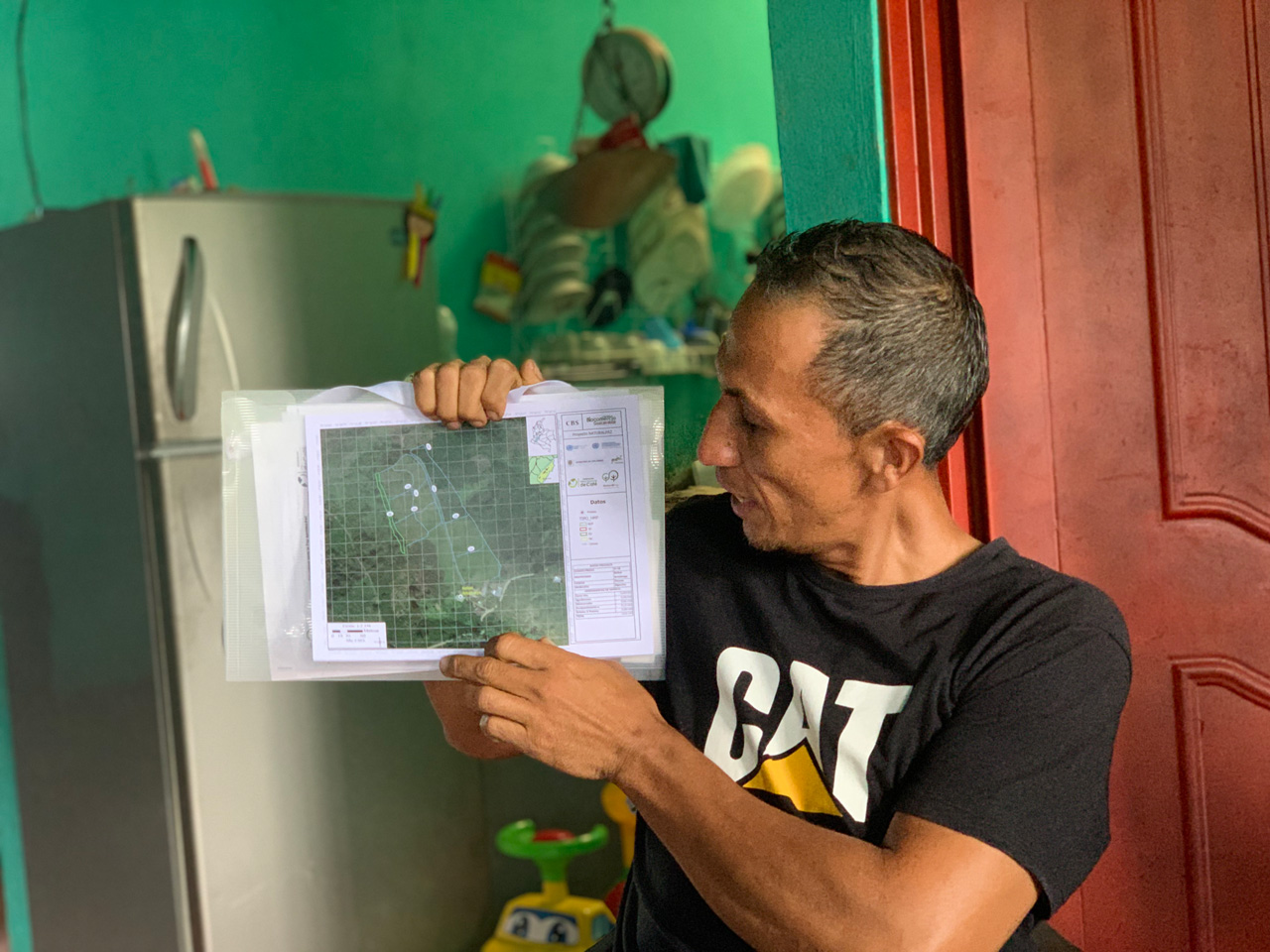
Manual with climate change adaptation measures for coffee producers that contribute to peace. Developed within the framework of the Nature for Peace project and in partnership with the National Coffee Roundtable Federation – FEMNCAFE.
Promotion of nature and archaeological tourism
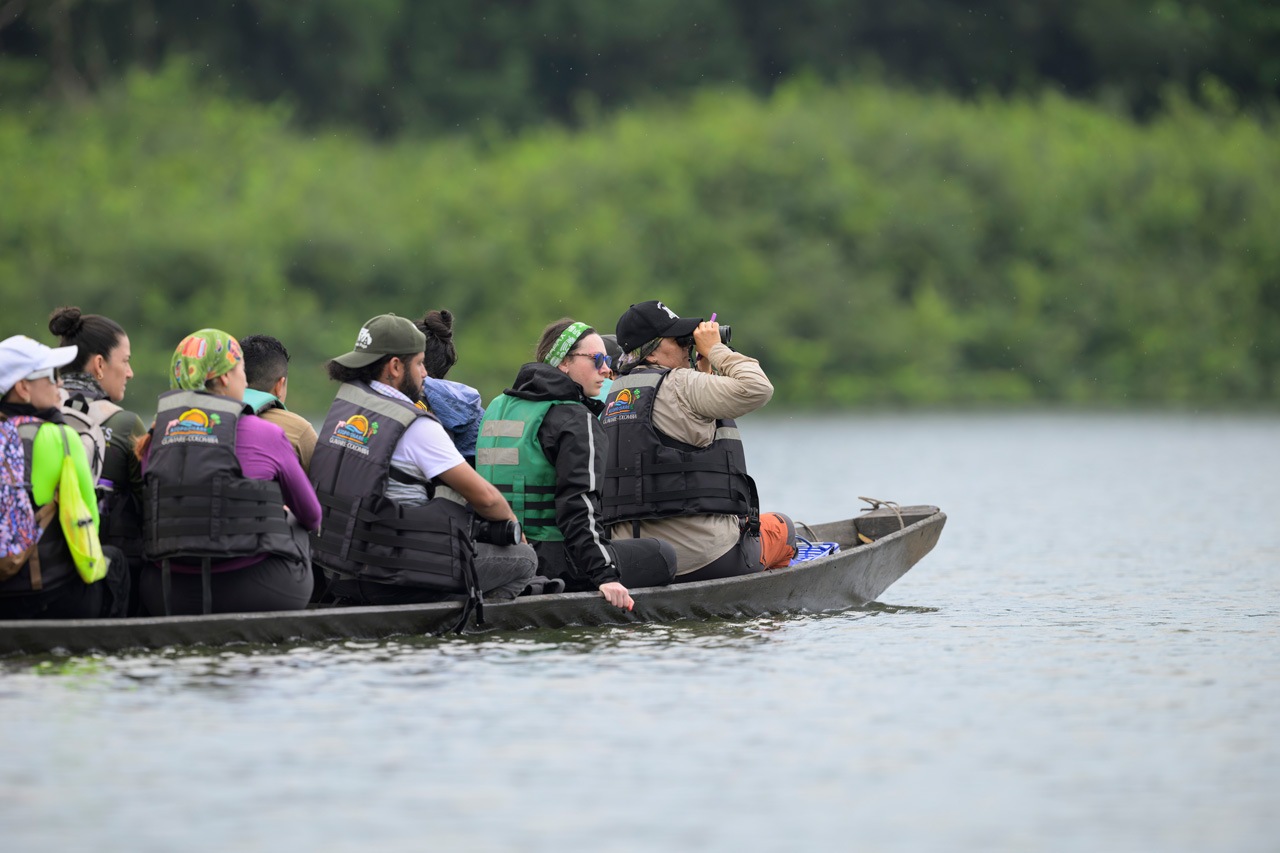
In November 2024, a Fam Press[5]and a tourism showcase were held as part of the celebration of the Second Jaguar Week in San José del Guaviare. These events helped to highlight the community experiences and efforts that combine environmental conservation with responsible tourism, offering participants a comprehensive perspective on the importance of the region’s collaborative network for the protection of the Jaguar Corridor.
[5]It refers to a familiarization trip designed for media, influencers and bloggers to experience a tourist destination or product and generate positive coverage.
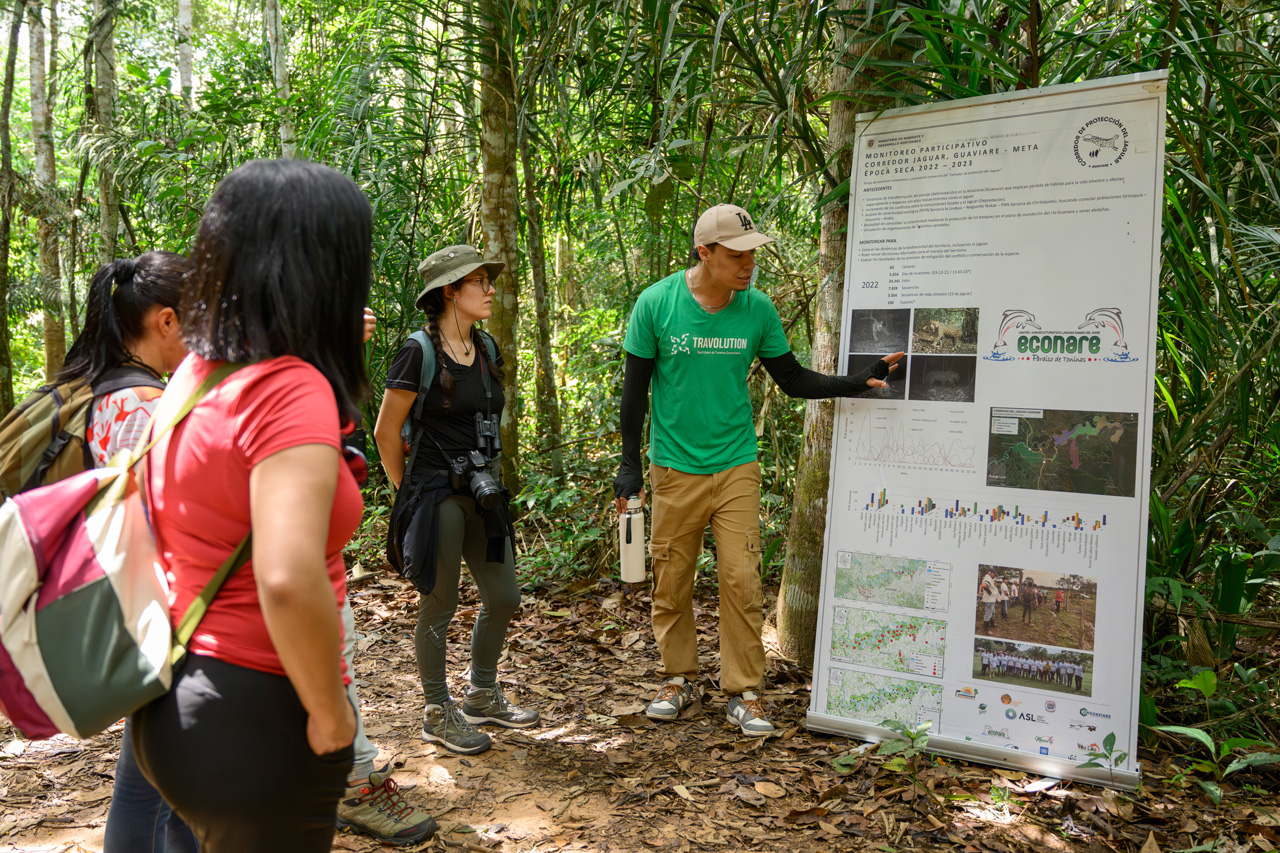
19 civil society organisations developed ecotourism projects in Guaviare. Activities include nature walks, trips to the Jaguar Corridor, visits to rock paintings and dolphin watching.




